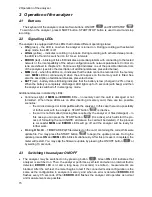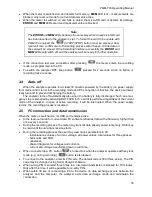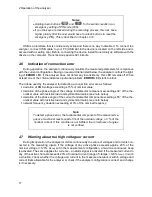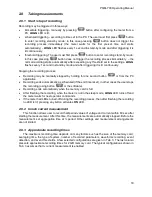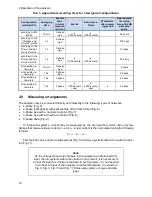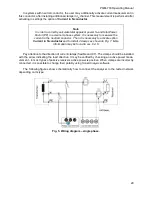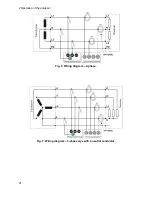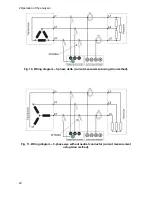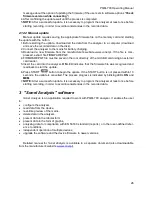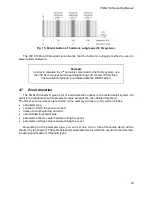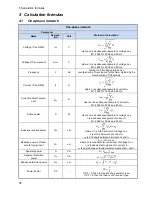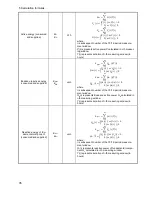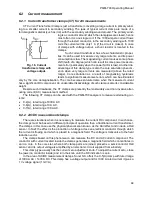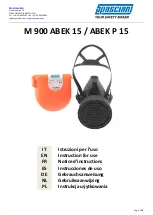
4 Design and measurement methods
29
between the sampling pulse rising edge and (M+1)-th pulse (where M is the number of samples in
the measuring window) should equal the duration of indicated number of periods in the measuring
window (10 or 12) with maximum allowed error of ±0,03%. To explain it in simpler terms, let’s use
the following example. For nominal frequencies the measuring window duration is exactly 200ms.
If the first sampling pulse occurs exactly at time t = 0, the first sampling pulse of the next measuring
window should occur at t = 200±0.06 ms. ±60 µs is allowed deviation of the sampling edge. The
standard also defines the recommended minimum frequency range at which the above-mentioned
synchronization system accuracy should be maintained and specifies it as ±5% of rated frequency
that is 47.5…52.5 Hz and 57…63 Hz for 50 Hz and 60 Hz mains, respectively.
The input voltage range for which the PLL system will work correctly is quite another matter.
The 61000-4-7 standard does not give here any concrete indications or requirements. The PQM-
700 PLL circuit needs L1-N voltage above 10 V for proper operation.
4.5
Frequency measurement
The signal for measurement of 10-second frequency values is taken from the L1 voltage chan-
nel. It is the same signal which is used for synchronization of the PLL. The L1 signal is sent to the
2
nd
order band pass filter which passband has been set to 40...70 Hz. This filter is to reduce the
level of harmonic components. Then, a square signal is formed from such filtered waveform. The
signal periods number and their duration is counted during the 10-second measuring cycle. 10-
second time intervals are determined by the real time clock (every full multiple of 10-second time).
The frequency is calculated as a ratio of counted periods to their duration.
4.6
Harmonic components measuring method
The harmonics are measured according to the recommendations given in the IEC 61000-4-7
standard.
The standard specifies the measuring method for individual harmonic components.
The whole process comprises a few stages:
synchronous sampling (10/12 periods),
Fast Fourier Transform (FFT),
grouping.
Fast Fourier Transform is performed on the 10/12-period measuring window (about 200 ms).
As a result of FFT, we receive a set of spectral lines from the 0 Hz frequency (DC) to the 40
th
harmonics (about 2.0 kHz for 50Hz or 2.4 kHz for 60 Hz). The distance between successive spectral
lines depends directly on the determined length of measuring window and is about 5 Hz.
As the PQM-700 analyzer collects 2048 samples per measuring window (for 50 Hz and 60 Hz),
this fulfills the requirement of Fast Fourier Transform that the number of samples subjected to trans-
formation equals a power of 2.
A very important thing is to maintain a constant synchronization of sampling with the mains.
FFT can be performed only on the data which include a multiple of the mains period. This condition
must be met in order to minimize a so-called spectral leakage which leads to falsified information
about actual spectral lines levels. The PQM-700 meets these requirements because the sampling
frequency is stabilized by the phase locked loop (PLL).
Because the sampling frequency can fluctuate over time, the standard provides for grouping
together with the harmonics main spectral lines also of the spectral lines in their direct vicinity. The
reason is that the components energy can pass partially to neighboring interharmonic components.
There are two grouping methods:
harmonic group (includes the main spectral line and five or six neighboring interharmonic com-
ponents on each side),
harmonic subgroup (includes the main spectral line and one neighboring line on each side).
Summary of Contents for PQM-700
Page 85: ...85 Notes...

